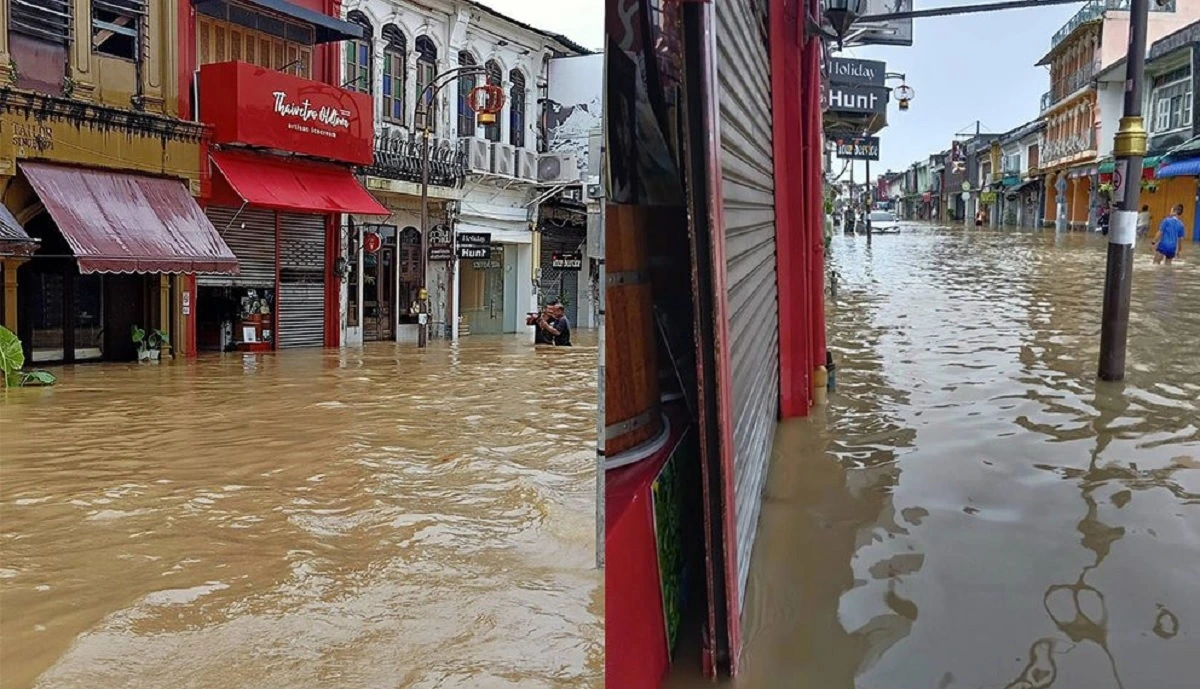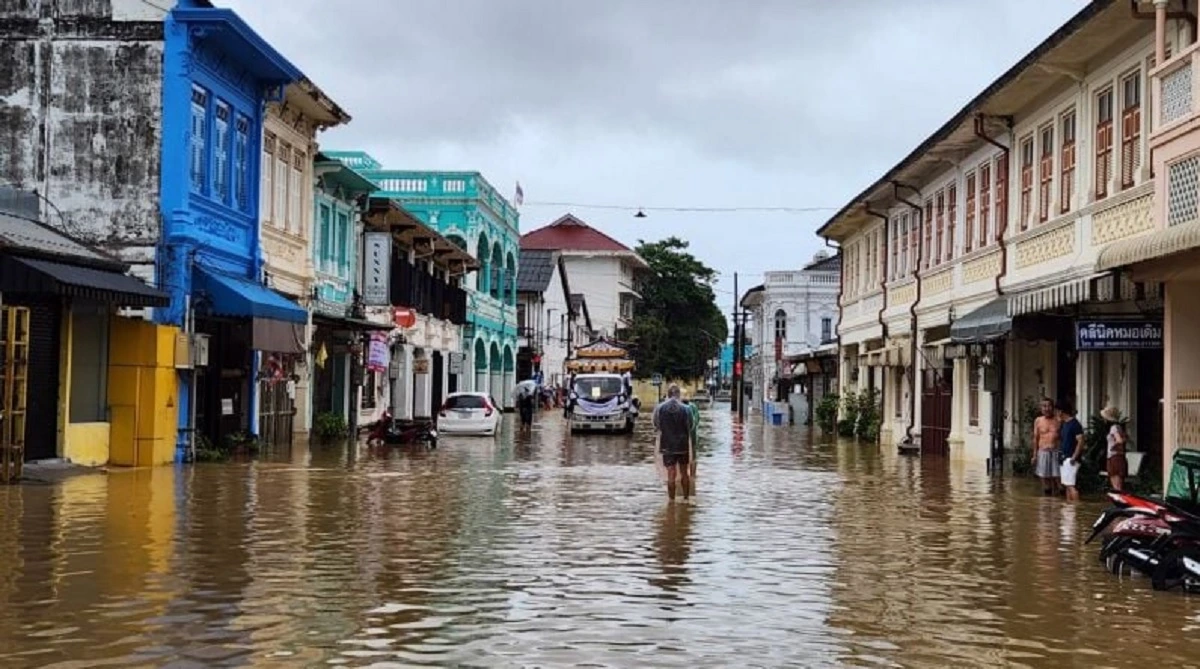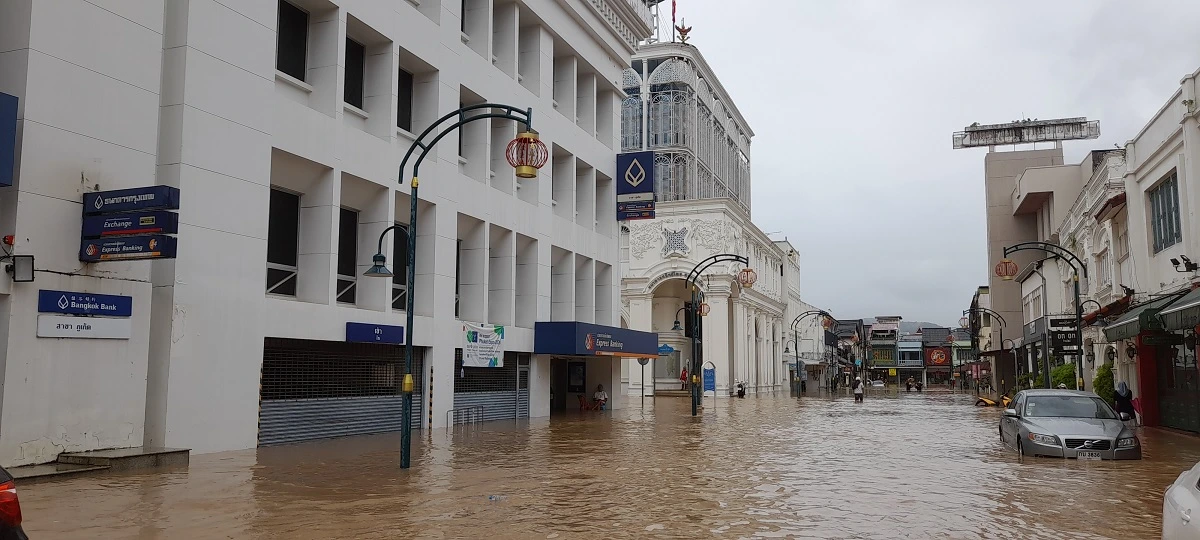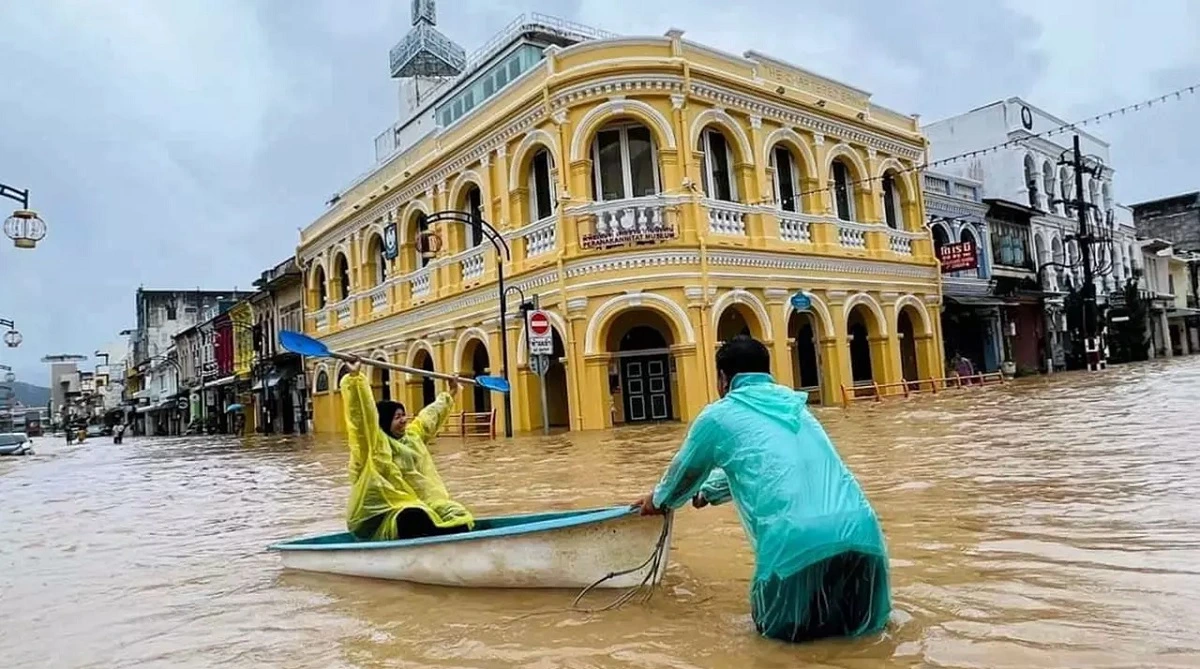Flooding in Phuket what you need to know (Updated)

Phuket, a tropical paradise known for its stunning beaches and vibrant nightlife, isn’t immune to the forces of nature. Flooding, particularly during the monsoon season, can disrupt travel plans and pose serious risks to both locals and tourists. If you’re planning a trip to this beautiful island, understanding the flooding situation is crucial for your safety and convenience.
However, as we all know about how Phuket has recently faced severe flooding due to heavy rainfall. This article provides an extensive overview of the flooding situation, its impact on residents and tourists, safety measures, and how to assist those affected.
Current situation
In September 2024, Phuket experienced significant rainfall, with reports indicating that 263 millimetres of rain fell within a 24-hour period. This deluge resulted in localized flooding across various districts, particularly affecting Thalang and Kathu. As of September 26, 2024, Phuket continues to face significant flooding due to persistent heavy rainfall. The heavy rains led to several critical issues:
- Inundated Roads: Key roads, including those behind Wat Ban Don and in Rawai, were submerged under water, making travel difficult and dangerous for residents and visitors alike.
- Landslides: The hilly areas of the island experienced landslides, which blocked access to several communities and posed risks to safety.
- Displaced Families: Over 740 households, impacting approximately 1,468 individuals, were directly affected by the floods. Many families were forced to evacuate their homes as floodwaters rose.
- Evacuations: As water levels rise, we advise residents living near the Bang Yai canal to move their belongings to higher ground for safety. The local government is actively monitoring the situation and providing assistance where needed.
Areas affected
| District | Affected Households | Affected Individuals |
|---|---|---|
| Kathu | 50 | 45 |
| Kamala | Multiple villages | Several communities |
| Thalang | 690 | 1,423 |
| Mueang | Several areas | Hundreds affected |
The flooding situation prompted local authorities to issue warnings and advisories for residents in vulnerable areas. Emergency services were mobilized to provide assistance and assess the damage caused by the torrential rains. As the community works towards recovery, efforts are being made to restore normalcy and ensure the safety of all residents and tourists exploring in Phuket.
For more information, check out our recent news articles about flooding in Phuket.
- Is it safe to travel to Phuket during flooding
- Phuket on high alert as heavy rains and flash floods loom
Contributing factors

The recent flood in Phuket in 2024 resulted from several interconnected factors. Understanding these elements is essential for grasping the severity of the flooding.
Climate change
Rising global temperatures have intensified weather patterns. Higher temperatures increase the atmosphere’s capacity to hold moisture, leading to heavier rainfall. Phuket experienced exceptionally intense monsoon rains in 2024. This climatic shift adds strain to areas already vulnerable due to inadequate infrastructure.
Urban development
Rapid urbanisation in Phuket has limited natural water absorption. New buildings and roads replace green spaces, reducing the ground’s ability to absorb rainwater. Inadequate drainage systems, burdened by rapid growth, cannot handle the increased water flow. This exacerbates flood risks, leading to severe consequences during heavy rainfalls.
Natural topography
Phuket’s natural landscape includes low-lying areas and hills. While hills direct water towards lower regions, these low-lying areas are prone to flooding. The island’s topography, combined with intense rainfall, results in water accumulation in populated zones. Furthermore, the natural water flow is obstructed by urban structures, worsening the situation.
These factors collectively have contributed to the devastating flood in Phuket in 2024. Understanding them allows you to better grasp the scope of the challenge faced and the need for effective mitigation strategies.
Immediate impacts of flooding
The recent flood in Phuket in 2024 has led to immediate and severe consequences. The intense monsoon rains, which exacerbated the situation, have affected various aspects of life on the island.
- Inundation of Roads:
- Key roads, including those behind Wat Ban Don and in Rawai, were submerged, severely disrupting transportation.
- Major thoroughfares like Highway 402 experienced temporary closures, affecting travel and logistics.
- Property Damage:
- Over 740 households were reported to be directly affected, with significant damage to homes and personal property.
- Many residents faced damage to essential household items, including furniture and appliances.
- Displacement of Families:
- Approximately 1,468 individuals were displaced due to flooding, with many seeking refuge in temporary shelters such as schools and community centres.
- Evacuations were ordered in vulnerable areas, particularly in Thalang District.
- Landslides:
- Hilly regions experienced landslides that blocked access to several communities, complicating rescue and relief efforts.
- Landslides posed additional risks to the safety of residents in affected areas.
- Local Business Disruptions:
- Many businesses in low-lying areas were forced to close temporarily due to flood damage or employee evacuations.
- Some businesses struggled to operate at full capacity as staff faced difficulties reaching work sites.
- Public Health Concerns:
- Stagnant water from flooding raised concerns about potential waterborne diseases and mosquito-borne illnesses.
- Local health authorities urged residents to take precautions against contamination and vector-borne diseases.
- Emergency Response Efforts:
- Local government agencies mobilized emergency services to provide immediate assistance, including food, shelter, and medical care.
- Relief operations included the distribution of essential supplies such as bottled water, dry food, and hygiene products.
- Community Mobilization:
- Community members and local organizations came together to assist those affected by the floods through volunteer efforts.
- Fundraising initiatives were launched to support recovery efforts for displaced families.
Response and recovery efforts

Government actions
Local authorities have been proactive in addressing the flooding situation:
- Relief Operations: Emergency services are providing food, shelter, and essential supplies to those affected.
- Infrastructure Repairs: Efforts are underway to repair damaged roads and clear debris from affected areas.
- Community Support: Local organizations are mobilizing volunteers to assist with cleanup efforts.
Long term initiatives
Authorities have launched several projects to reduce flood risks. Improved drainage systems are a key focus. The local government has invested significantly in upgrading these systems to handle heavy rainfall more efficiently. Recent developments include expanding existing drains and constructing new ones in flood-prone areas.
Early warning systems are also essential. Phuket’s government is implementing advanced weather prediction technology. This helps in issuing timely alerts, giving residents and tourists critical time to prepare. Efficient evacuation plans are also in place, particularly for high-risk zones like Patong and Kata.
Land-use regulations have seen revisions. These aim to prevent overdevelopment that exacerbates flooding. Stricter controls on new constructions ensure that natural water absorption areas are preserved. Government agencies are actively enforcing these rules, which are crucial for long-term flood mitigation.
Community involvement
If you want to contribute during this challenging time, consider the following options:
- Donate Essential Items:
- Dry food
- Bottled water
- Bedding
- Clothing
- Towels
- Blankets
- Financial Contributions: Donations can also be made to support relief efforts directly.
Suggested organisations for donations
- Rotary Club of Tongkah
- They are actively involved in disaster relief efforts across Phuket.
- Donations can be made to their disaster relief accounts.
- Phuket Provincial Disaster Prevention and Mitigation Directorate
- They are coordinating local relief efforts and accepting donations for supplies.
- Contact: 076-211111 for more information.
- 5 Star Marine Phuket
- They are collecting essential items at their office for distribution to affected communities.
- Thai Red Cross
- Accepts both financial contributions and essential item donations
Long term support
Local communities play a crucial role in flood management. Neighbourhood groups organise regular clean-up drives. These initiatives help keep drains and canals free from debris, reducing blockages during heavy rains. Volunteer groups also assist in disseminating flood preparedness information.
Education campaigns in schools and community centres raise awareness. These campaigns focus on emergency response protocols. They teach children and adults how to act quickly and safely during floods.
Businesses are also involved. Some local enterprises invest in flood defences for their premises, contributing to broader community resilience. Collaborative efforts between businesses and local authorities help in resource pooling for flood mitigation.

Understanding necessary safety measures is vital during floods in Phuket. Use these tips to ensure your safety during flooding.
What locals and tourists should do?
Stay informed about the local weather forecast to anticipate flooding risks. Download weather apps, or follow local news channels for updates.
- Avoid Flooded Areas: Stay clear of flood-prone areas like Patong and Kata. Floodwaters can hide hazards such as open manholes and debris.
- Follow Authorities’ Instructions: Always adhere to official warnings and guidelines. If authorities advise evacuation, leave the area immediately.
- Prepare Emergency Kits: Keep essentials like water, food, medications, flashlights, and important documents handy.
- Plan Evacuation Routes: Know multiple evacuation routes if one becomes impassable. Urban areas can see rapid flooding, making flexibility crucial.
- Vehicle Safety: Don’t drive through flooded roads. Even shallow water can stall engines or sweep vehicles away.
- Health Precautions: Avoid contact with floodwater to reduce the risk of disease. Wear protective clothing and use insect repellent to prevent mosquito bites.
Emergency resources and contacts
Having quick access to emergency contacts can save lives during flooding in Phuket.
Emergency Hotlines:
- Tourist Police: Dial 1155 for tourist-related emergencies.
- General Emergencies: Contact 191 for immediate assistance.
- Ambulance and Medical Emergencies: Dial 1669.
Before leaving anywhere in Phuket during the circumstances it is also advised to look for weather updates and see if it is a good time to go out, You can check out the Thai Meteorological Department’s official website for the same.
Take these preparations seriously to stay safe, whether you’re a local or visiting Phuket.
Latest Thailand News
Follow The Thaiger on Google News:


























